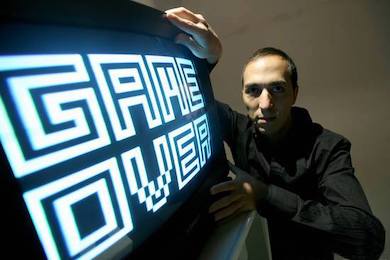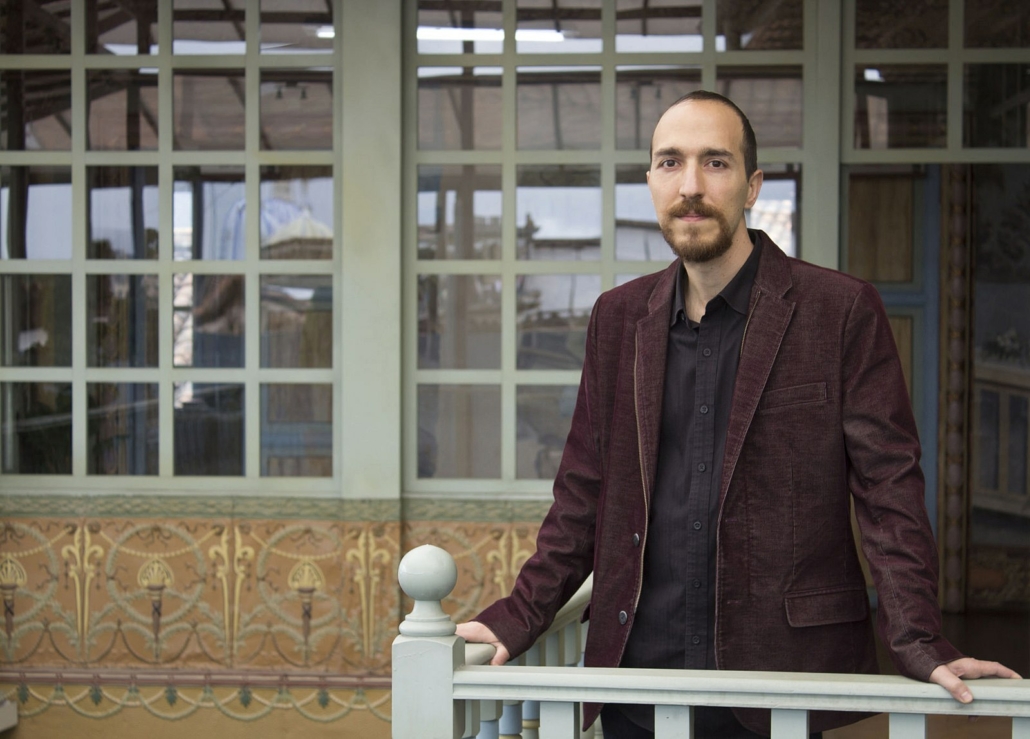
MIAMI – In 1985, when pioneer digital artist Yucef Merhi was only eight years old and growing up in Caracas, he reverse-engineered his ATARI 2600 and turned it into a programmable computer. He used the Atari Video Computer System to produce generative videos based in language instructions. A leading art critic at the time saw this and proclaimed: “What you have created here, Yucef, will be considered a work of art in years to come.”
Decades later, Merhi’s creations would be exhibited at the New Museum in New York and travel all over the world in international exhibitions, celebrated as the first works of art crafted from a videogame console. Click to watch a video that demonstrates one of these original 1985 works.
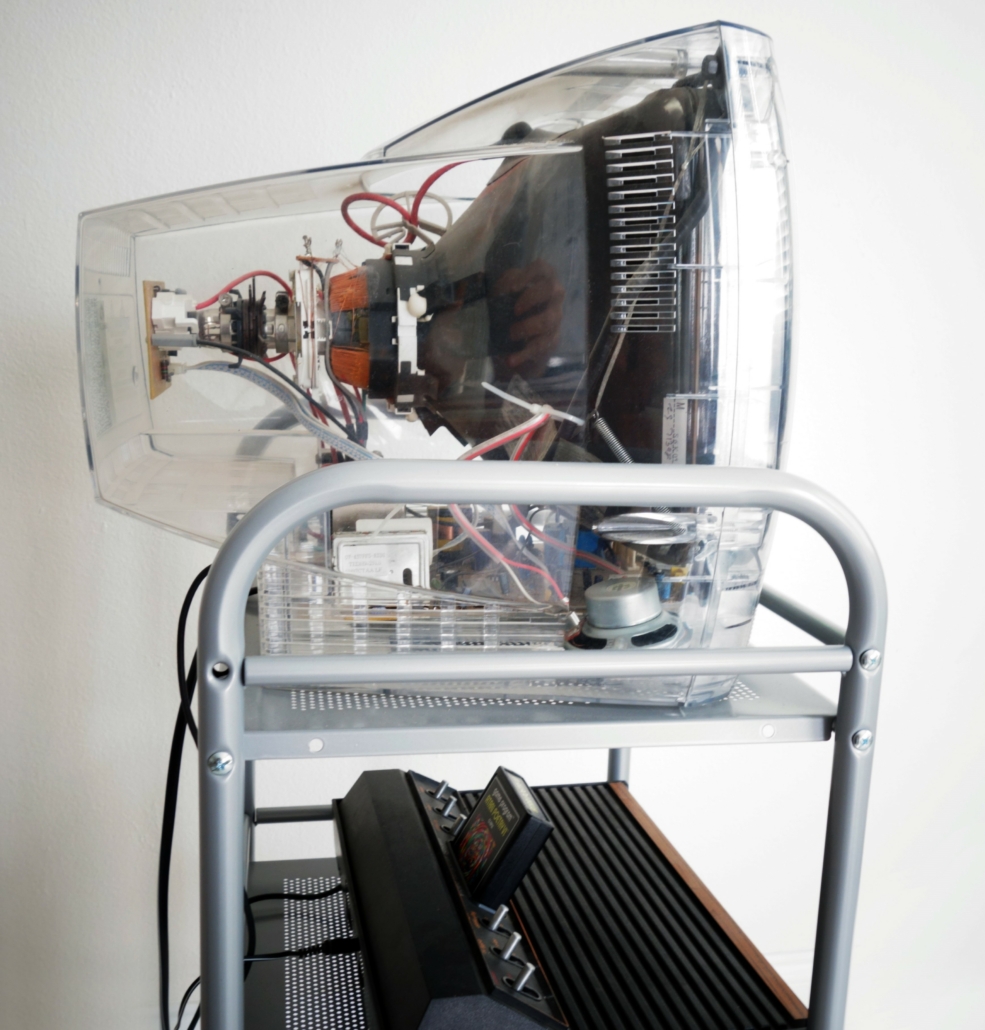
One year later, at the age of nine, Merhi figured out how to calibrate the atomic clock of Venezuela, and the National Ministry of Defense commended him for achieving this breakthrough.
Throughout his 30+ year journey, the artist’s work has remained front and center in the current thinking about art, and especially digital art. Opening up a panoramic view of Merhi’s inner worlds, the new show Yucef Merhi: Open at The Bonnier Gallery captures the far-reaching consequence of his orbit around contemporary culture – from data-hacking as protest art against totalitarianism and police brutality, to his vision called “retrocycling,” which rescues obsolete tech devices from landfills, to perfecting a universal language as new source code for planetary awakening.
The gallery show presents 15 works from five different series that map out his creative diaspora. The show ushers in the eagerly anticipated return of Miami’s Art Basel season, opening on September 2 at the Bonnier Gallery in Allapattah, Miami’s burgeoning art district.
“This new show will allow people to experience digital art that is of substance, as opposed to the speculative NFTs that seem to dominate that conversation,” said Grant Bonnier, the curator of this show and owner of the gallery. “Yucef Merhi has packed the equivalent of several lifetimes leading up to this critical mid-career point of his trajectory,” Bonnier added. “Merhi is poised at the leading edge of the technology and art.”
Yucef Merhi has produced bodies of work that engage a wide spectrum, including poetry, facial recognition, artificial intelligence, sound, virtual reality, hacking, and retro video games. By ensuring that his works always connect with the warmth of human engagement through language, Merhi’s momentum continues to surge ahead of the curve.
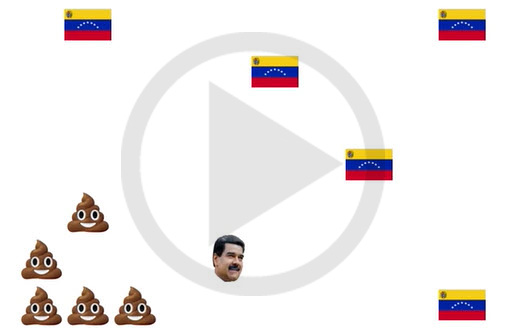
MIT chooses Yucef Merhi as a ‘leading definer’ in his field
In addition to announcing the opening of this new show, the gallery is also sharing the news from the Massachusetts Institute of Technology (MIT) that Yucef Merhi was chosen for the MIT Open Documentary Lab.
After a rigorous selection process, Merhi is the only artist from Miami (and from all of Florida) to be selected as fellows from around the world and invited by MIT. They were chosen by MIT because they are considered definers in their fields ‒ leaders who deepen the impact and reach of innovative reality-based storytelling. Many of the winners combine influential, multiple roles as award-winning technologists, artists, academics, and activists. The international group includes Fellows from the U.S., Brazil, Colombia, the UK, and a number of expats too, from places like Iran and Algeria. MIT is a leading center for thinking about and developing technology, and this fellowship brings a humanistic, artistic, and critical dimension to that work, taking it on through new forms of documentary and creativity.
“Yucef Merhi has an impressive record as a border-crosser, a path-breaker, and hacker extraordinaire,” said William Uricchio, the Founder and Principal Investigator of MIT Open Documentary Lab, and a Professor of Comparative Media Studies at MIT. “Merhi’s commitment to the environmental – as context, site of interrogation, and canvas (as his building-scale works demonstrate) – casts his work in a light that is defining the frontiers of the new documentary,” adds Uricchio.
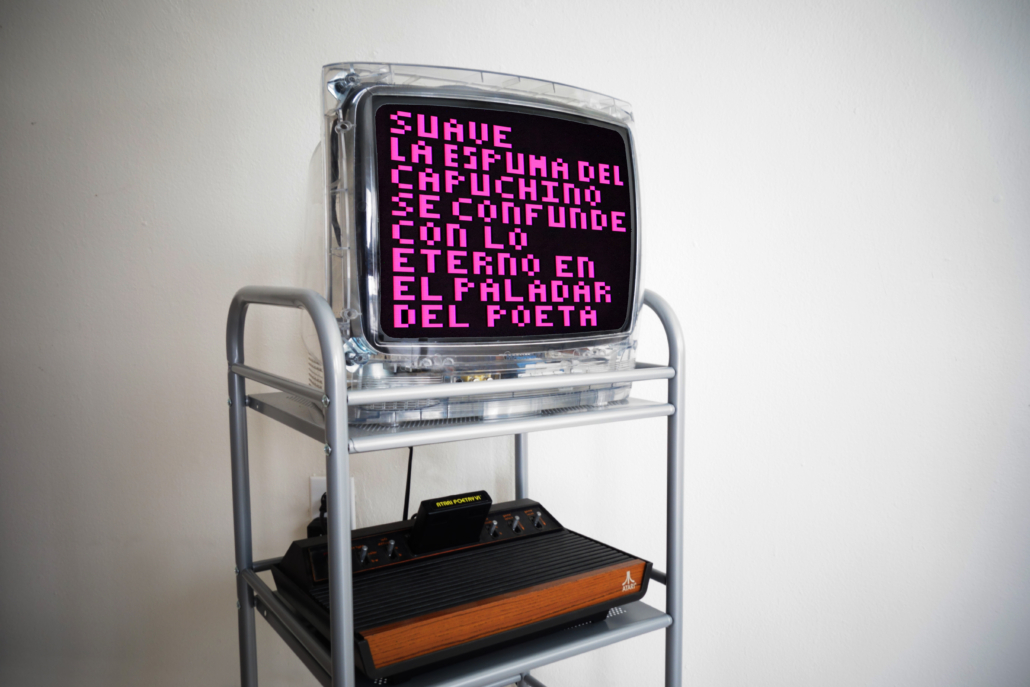
For this MIT fellowship, Merhi will be investigating how to reduce the massive amounts of electronic waste on our planet that comes from obsolete technologies, by re-purposing outdated devices and transforming them into new artistic enterprises. This includes tons of discarded devices that have been filling up landfills for decades: video game consoles from the 1970s, TVs and slide projectors from the 1980s, cassette players, CD players, computer supplies, and VR equipment from the 1990s. Many of these discarded devices were designed and engineered to last longer than we expect from today’s appliances. Merhi is calling his new vision “retrocycling.”
“I propose it is now time to ‘re-plan’ obsolescence moving forward,” Merhi said, “to start thinking about what we can do with the countless consumer electronics produced. Historic technologies have the power to align our actions and spark the curiosity of younger generations about new uses of old hardware.”
A tech savant who pioneered digital art
“As a child, I felt I could actually communicate with these early ATARI machines back in the 1980s. Electronic toys were so important to me because I was able to build my reality with them,” Merhi said. When he was 15, in 1992, Merhi was already consulting for AT&T, and created one of Venezuela’s first electronic communities by programming a Bulletin Board System (BBS). The child prodigy even built his country’s first-ever website (for a local mayor who was also a Miss Universe). As time progressed, however, these whimsical connections between his home country and his art would take a more somber turn: reflecting the years ahead filled with turmoil and painful obstacles to restoring democracy.
By 1998, he had developed his first “Datagram,” a concept Merhi coined to visualize the movement of hacked information (he prefers the term “intercepted data” instead of hacking).
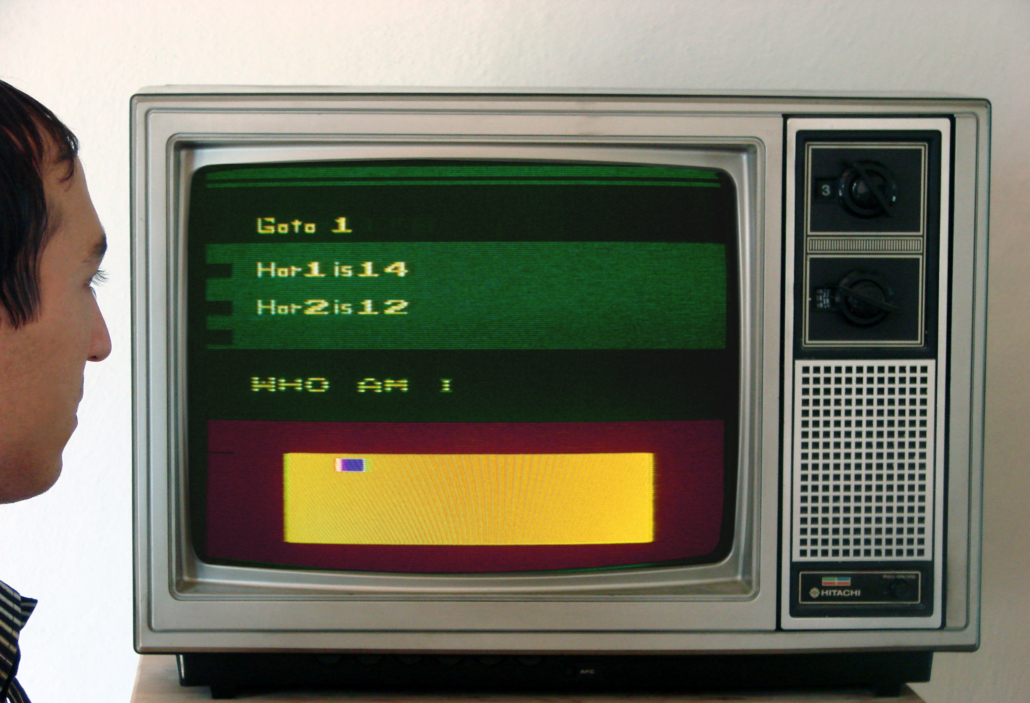
Throughout the years, in protest of the dictatorship, Merhi intercepted Venezuelan government email accounts and databases, turning these revealed secrets into art that raises awareness.
The Chavez regime in Venezuela feared Merhi because they realized he was able to access any server and any email platform in the country ‒ he even intercepted the emails of Hugo Chavez.
The government in Venezuela stopped inviting Merhi to exhibit at museums and even blocked him from representing Venezuela at the Venice Biennale in 2013. Merhi was put on a cultural blacklist.
Fast-forward to now, and Merhi has reached international acclaim with major museum exhibitions, biennials, and gallery shows across the U.S., Latin America, Europe and Asia. He is the recipient of several awards, and his work is represented in the permanent collections of numerous museums and private collections. “Yucef Merhi is precisely the type of artist we should be focusing on coming out of the pandemic. He is like an antenna, with an uncanny ability to internalize the energy of others around him and reflect it in his work. He’s a beacon of hope ‒ what we all need right now,” says Grant Bonnier.
The gallery show’s largest installation, Compassion (2020), was created in 2020 during the pandemic and responds to the turbulent times we are living through. The artist repurposed television sets that were manufactured for use in jails by incarcerated Americans ‒ reclaiming them with new, positive meaning.
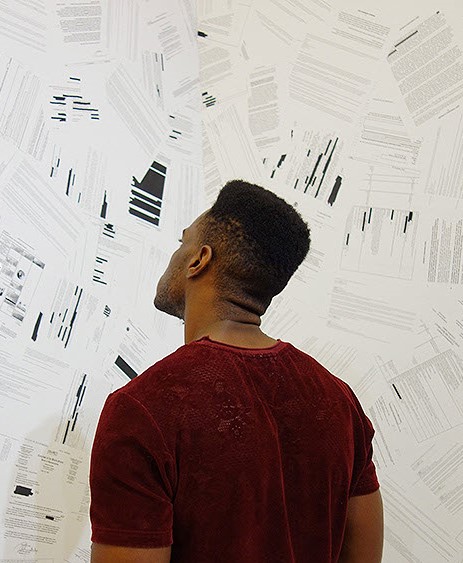
The viewer is drawn into the experience by their unusual transparent cases, originally meant to prevent prison-related smuggling. The installation features ATARIs that he programmed and connected to each of the television monitors. The ATARI cartridges interface to spell out one of Merhi’s epiphanies: Compassion is the Divine Compass, integrating language, video games, the sound of a Tibetan bell, and consciousness.
Click to watch a video demonstrating this installation.
Merhi lived and worked for an entire year in the ancient town of Antigua, Guatemala, researching Proto-Mayan language alongside archaeologists, historians, philologists, and epigraphists. There, he created works that tackle the atrocities of colonialism, called Perfect Language: Maya. When the Spaniards subjugated the Maya peoples, they were intent on destroying their culture by erasing the Mayan visual language and making them dependent on the Latin alphabet instead. Some of the works by Merhi were carved in wood with the aid of master woodwork craftsmen. They symbolize the word “wood” in Mayan. “If we could disconnect from the occidental-colonizing view of art, we might be able to see and experience languages that are connected to the Divine,” Merhi said.
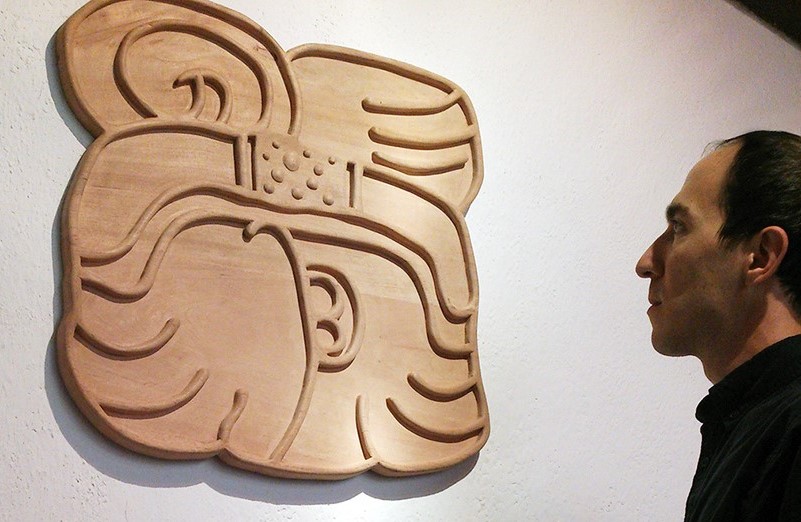
Merhi has even discovered an astonishing new literary form that he unlocked using the Fibonacci sequence, amplifying the meaning of words in a creative way that has never before been accomplished. While the Fibonacci sequence has been applied to music and artistic composition, no one has ever applied it to language in this manner: Poliverso.
The Yucef Merhi: Open exhibition will run from Sept. 2 through Nov. 20, 2021. The Bonnier Gallery is located at 3408 N.W. 7th Ave. in Miami. Open Tuesday–Saturday, 11:00 a.m.-6:00 p.m.
# # #


